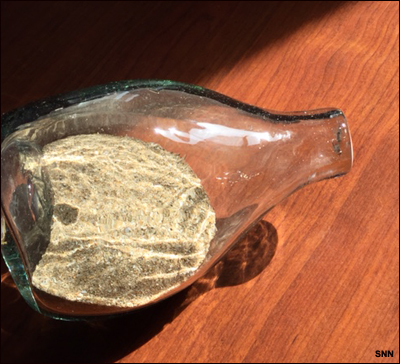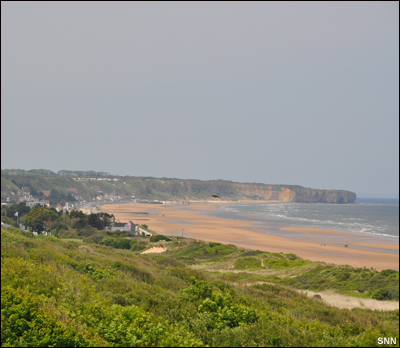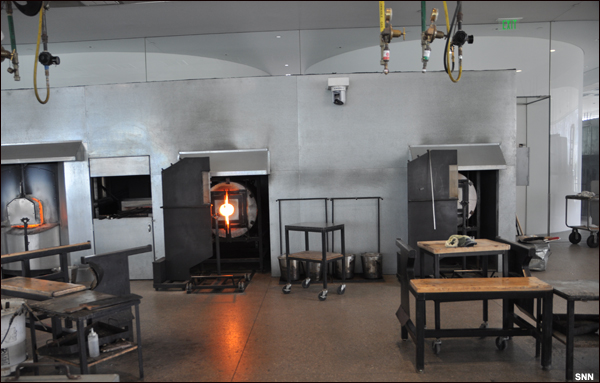| Already a member? Login Now! |
|
 |
|
3 great ways to use Student News Net!
SNN invites you to sign up for a subscription for our award winning site, with access to great stories and educational features. Obviously we are proud of our accomplishments, but we really want to share the truly engaging stories and custom features for the classroom and beyond.
As an ad-free site, SNN relies on subscriptions to enable it to produce this award winning educational website. Where else can you get daily updates of engaging stories and current events backed up by interdisciplinary activities and extra features?
|
|
|
|

| Learning Resources |
| |
United Nations report
When people talk about mining, it's usually associated with digging deep in the Earth to unearth and retrieve coal, gems, salt, and other minerals. Very few people think about the process of mining or extracting sand for its many uses, including making glass.
In 2013, Denis Delestrac created a documentary about sand - Sand Wars. The documentary prompted officials with the United Nations Environmental Programme (UNEP) to study the issue of extracting sand and gravel around the world. In March 2014, UNEP published a paper about their findings – UNEP: Sand, rarer than one thinks. |
| |
What is the difference between sand and gravel?
Size of sand: from one-sixteenth of a millimeter (mm) to 2mm
Size of gravel: 2mm to 64mm |
| |
The sands of Omaha Beach in Normandy, France
 Omaha beach sand Omaha beach sand

Omaha Beach
The sands of the beaches of Normandy, a 50-mile stretch in France, are sacred ground. On June 6, 1944, thousands of Allied soldiers were killed on the beaches during the D-Day invasion to liberate France and Europe from Nazi occupation. Adolf Hitler knew the Allies would attempt an invasion from the water so he fortified positions up and down the coast of France. Concrete bunkers were built into sand dunes where Nazi soldiers hid and attacked as Allied soldiers landed on the beaches. In 2009, Student News Net attended the 65th anniversary of D-Day. Members of the tour group were allowed to collect sand from Omaha Beach, the sand shown in the picture above. |
| |
|

|
|
| One Hot and Cool Topic: The art - and Science - of Glass |
Watch a handful of sand fall through your fingers. If the sand is from a non-tropical region, such as the Great Lakes, the west coast along the Pacific Ocean, or the east coast along the Atlantic Ocean, the main component of the sand is silica. Silica is a compound – silicon dioxide (SiO2) with one atom of silicon and two atoms of oxygen. If the sand is from a tropical beach in the Caribbean, the main component of the sand is calcium carbonate (CaCO3) - one atom of calcium, one carbon atom, and three oxygen atoms. Its formation is the result of the decay of organisms inhabiting the network of coral reef found in tropical waters. Heat sand, soda ash, and lime to very high temperatures, cool it down, and the result is – glass. Grains of sand are transformed to a solid glass object. There is a myth, still unproven, that the first glass resulted from lightning striking sand on a beach. There is not one formula that defines glass because glass can be made with many different recipes, called the batch. A Hot Shop is an art studio where glass is made by glass artists. On March 15, 2016, Student News Net interviewed Leonard Marty, master instructor of glassblowing at the internationally renowned Glass Pavilion at the Toledo Museum of Art. Watch the session above and then explore the world of glassblowing and glassmaking through the content on this page. You can submit questions in the Chat and Collaborate box to the right.
Student News Net story (March 22, 2016)
Glass: a hot and cool combo of art and science
|
| Student Q & A |
1. Can you reheat the glass once it cools?
Yes. Blown glass can be reheated and reshaped. Recycling glass is also very easy because you just have to add heat.
2. Can you mix colors of glass?
Yes. Blown glass colors can be mixed but their COE (coefficient of expansion) has to match with one another to prevent breakage during the annealing cycle.
3. How can I learn to blow glass in my area? [Rock Springs, Wyoming] Is there an association I can contact?
The easiest way to find out if you can blow glass in your area is probably by using Google. Search for glassblowers in a fifty-mile radius of your address. You also can contact the Glass Art Society for help.
[There is a link to the Glass Art Society in Student News Net's Extra Extra Resources under the letter G]
4. I think your job is amazing...I would like to try it...how do I go about it?
The best way to see if you like glass making is to sign-up for a workshop and give it a try.
5. How do you decide how many layers of glass to add to your project?
The size/scale of an object I want to create determines how many layers/gathers I take from the furnace. If I want to make a large or heavy object, or something with additions or fancy coloring, I will always have an assistant.
6. How do I find out what kind of glass can be made here in Wyoming?
See answer number three above.
7. So glass is not a super-cooled liquid?
I say glass is a super-cooled liquid. When glass is hot the molecules are in movement. As glass cools the molecules begin to slow their movement. When that heat is gone whatever the random pattern the molecules are in, that’s where they stay.
8. You mentioned that you cannot get uranium like you use to :0) Can I still buy glass with uranium in it? It s sounds very cool to look at! Is it radioactive?
Yes, you can purchase uranium glass. Mostly it will have been made during the Depression era. Look for it in antique shops or look up “Vaseline glass” on EBAY. A lot of it is sold there. It has the color of Vaseline but will glow a weird green when exposed to ultraviolet light. It’s pretty cool! It is NOT radioactive in the glass form. |
| |
| Vocabulary |
1. gob: the beginning stages of glass when the piece is a molten mass
2. batch (noun): the mixture of raw materials (usually sand, soda ash, and lime)
3. wood cup (noun) : a piece made of fruit wood (often cherry wood) in which glass artists place the hot glass as it is taking shape
4. blowpipe (noun): a long pipe made of steel through which a glass artist blows to create a bubble in the molten glass
5. molten (adj.): very hot, liquefied |
| |
|
 |
| Multimedia |
Lino Tagliapietra, an Italian glass artist (glassblower), is considered by many to be the best glassblower in the world. He has a studio in Murano, Italy. Murano is known around the world as a center for high quality glass artistry. Watch Lino make glass in his Italian studio. The video is about 16 minutes. |
| |
| |
| Questions |
After watching the Student News Net SLOG video above and the video of Lino Tagliapietra, answer the following questions:
1. Why can glassblowers handle the steel pipe without gloves when the glass is so hot at the end of the pipe?
2. What evidence in the videos demonstrate how hot the glass is as it is being shaped? What is the temperature of the glass as it is being shaped?
3. Once a piece of glass is made, how long does it take to cool down so it can be touched without wearing gloves? |
| |
|
|
| EXTRA! EXTRA! WRITING PRACTICE |
| |
| Practice Your Writing Skills by summarizing what you've learned by reading, sharing and participating in this SLOG. |
 |
|
|
|
|
|
|
|